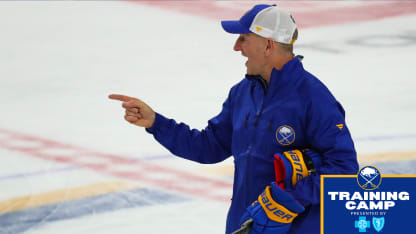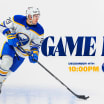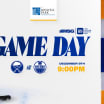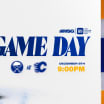No coach can succeed without the support of their staff. Krueger leaned on the expertise of his performance specialists, head strength and conditioning coach Dr. Ed Gannon and lead sports scientist Dr. Dean Higham, to help construct a camp schedule that would optimize physical performance.
They landed on a periodized structure broken into three phases. The Sabres had three practices leading into their first intrasquad scrimmage, followed by a recovery day. That cycle repeated for the second phase. Phase 3 was a pair of practice days leading into the opener against Washington.
Players were constantly monitored along the way. Gannon and Higham stayed in close contact with players and their trainers throughout the long offseason, tailoring individual plans based on each player's training environment, their personal goals, and the goals of the organization. The constant communication assured there would be no surprises when players arrived for the start of camp.
The Sabres have a variety of tools at their disposal to create a picture of how each athlete is reacting physically to the rigors of camp. Off the ice, they measure neuromuscular status and hydration levels. On it, they keep track of heart rates and use accelerometer sensers planted into players' shoulder pads to determine a individual workloads.
"The training camp period is a reconditioning period," Gannon said. "The goal of the training camp period is to bridge the gap, build up the sport-specific intensities to prepare them to play. That's something they just don't get during the offseason.
"There's a time restriction there. But we do have to ensure that we're pushing volume, but pushing intensity in a smart, progressive way to bridge that gap between practice and play. This time around, we had two weeks to do it in, which is shorter than we usually get."
The idea for the first two phases was to build gradual physiological stress and then back off to allow recovery. Measurements over the past two days indicated a positive bounce back in terms of how the players reacted to Saturday's scrimmage.



















